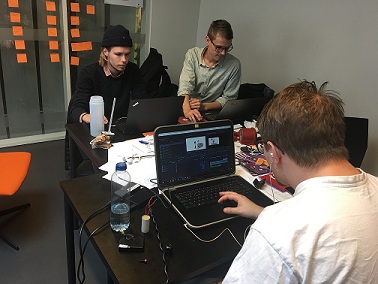Casebeskrivelse:

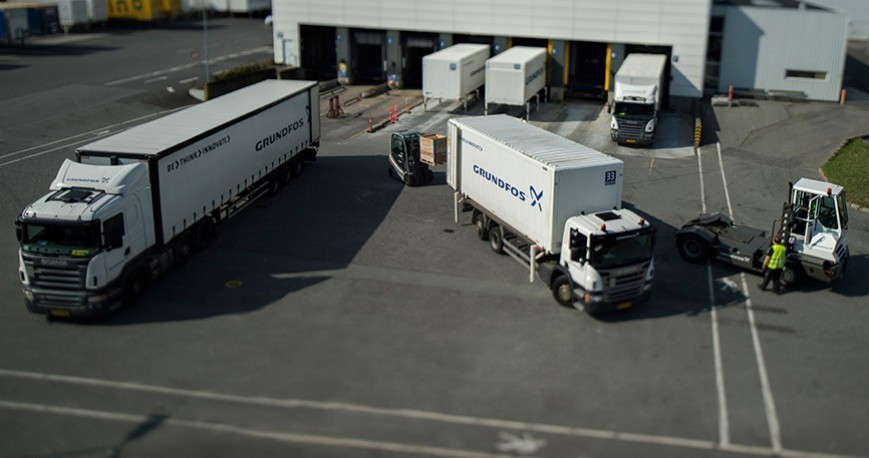
Grundfos
Through 83 companies we are directly accessible in 56 countries, and through our network of partners, distributors and subdealers, we are present in even more. The company employs around 18,500 people today. Poul Due Jensen founded the company in 1945 from his basement in Bjerringbro, Denmark. The first pump made was a water pump. Through the decades, we have sharpened our skills, and to this day, we take pride in moving water to where it should be. Using as little energy as possible when doing it. (“Grundfos.com”)
Circular Economy
the circular economy is restorative and regenerative by design. Relying on system-wide innovation, it aims to redefine products and services to design a reuse system , while minimising negative impacts. Underpinned by a transition to renewable energy sources, the circular model builds economic, natural and social capital.
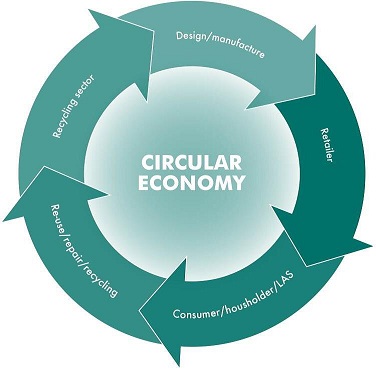
Research Focus/Our case
When the case partner presented the case objective to the groups the case was framed with a focus on the difficulty of recycling and/or reusing pump components.
However, when we were visiting GRUNDFOS and had a lecture the case was framed differently. This time the focus was circular economy and how to commercialize the issue and how to get the end user to know about the system and delivering their used pumps back. This was the main issue since the number of pumps delivered back was very small compared to the number of manufactured pumps.

Group Members
Othman Harba (Entrepreneurial Engineering)
Julie Elert Munk (Industrial Design)
Søren Lauridsen Banke (Industrial Design)
Casper Mohr (Industrial Design)
Christofer Lee Pedersen (Industrial Design)
Theresa Schmidt (Entrepreneurial Engineering)

Konceptvideo:
Designprocess:
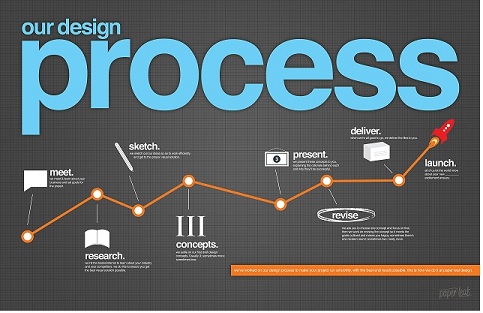
The first meeting with our case partner (Day 1)
Monday September 11th
Talking with SINTEX expert -Alexandru. Discussing the case, the details of schedule etc.
We prepared questions that primarily were consisting of how to frame the problem solving in the case and to under their POW (point of view) of the case. It was important for us to find potential angles to frame the case to figure out the values and preferences the company had. We were told that the green stamp was important to Grundfos so the reuse/recycle department business were allowed to make negative income to some extent.
Field work /Brainstorm (Day 2)
Tuesday September 12th
We had an interview with Kristina who has a PH.D in recycle/reuse. We talked mostly about circular economy and why it was important. We talked about pros and cons in reuse and recycle. Whether the energy consumption in recycle was beneficial compared to the expenses it went through processing (e.g. re melting plastic or iron).
We spend the day preparing questions for Kristina and for experts we were to meet Wednesday.
In the group we talked about shredding rubber, plastic and ceramics to make it useful as granule.
*Ceramics for fertilizer.
*Plastic for insulation in walls.
Trip to Grundfos headquarters (Bjerringbro City)(Day 3)
Wednesday September 13th
Schedule Grundfos: Tour in manufacturing hall and disassembly department, lecture with lunch.A lot of data was retrieved in Grundfos (material data). Grundfos sells “scrap” materials to STENA a company that put the scrap to use in another way by first recycling it.They told they retrieved 7000 pumps but sold 14M pumps annually. The private pumps they sold was 3M annually.
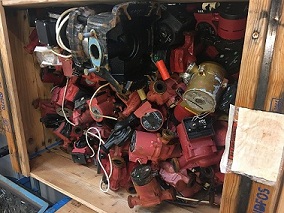
Skive City Hall (Skive city)
Talked about concept possibilities/The ELITO Method Concept .(Day 4/Day 5)
Thursday Septemer 14th /Friday September 15th
The ELITO Method (Observations, Judgements, Values, Concept, key metaphors) was used to make a methodical approach. This would help us track and back track the progression. This helped us see the case from a variety of perspectives.
We proceeded on the ELITO method. We got some great concepts such as: Charity fund system, deposit platform for every bought pump and a return logo on the pump. This was to make the end customer aware of the return system and the importance of reusing.
Core Design for the Quality Criteria “Second Week 1 Day”
Monday September 18th
We started the day defining the concepts so they could be easily and precisely explained to Grundfos/SINTEX partners. The approach was to first define some Quality Criterias. These criterias helped us grasp upon the defined problem and made it possible to make a solution based on these criterias. The criterias were written in priorities first: Primary, secondary, tertiary and then the quandary criterias. The criterias were such as make the customer aware of the reuse system (primarily), Make it beneficial for the end user (secondary), Economically the company may not loose money in long term strategy (tertiary), The company should get green stamped (quandary).

We then had the meeting with Alexandru
The quality criteria was discussed and (he agreed upon them) but added an extra comment on the tertiary criteria (connected to the economy note). This helped get all in the meeting something to agree upon and sort of formed a contract. We have an obligation to live up to these criteria next time we present some progression.
We then proceeded by telling about the concepts. Alexandro seemed pleased about the concepts. We presented the concepts from two different points of view, depending on where the main problem were.
Alexandru proposed that we merged a couple of the ideas. E.g. “Charity fund system” + “logo on pumps” concepts.
In the end he pointed out that “Deposit platform” concept would require a lot of administration unless we tried to rethink the idea.
We ended up by picking: “Charity fund system” + “logo on pumps” concepts.
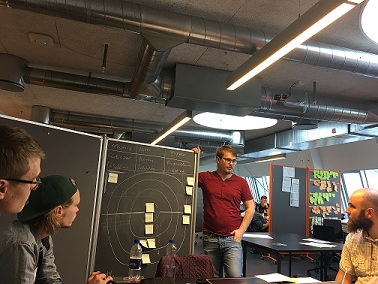
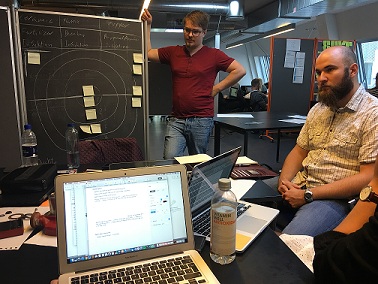
Video sketches (Day 2+3 Second Week)
Tuesday September 20th /Wednesday September 21st
Lecture with Peter Vistisen till 12 o’ clock
Continued on group work. We discussed how the concept should be solved. And whether the Return logo should be an excisting one or a new made one (discussing the marketing necessities for either case).We mostly spend the whole day finishing story boards, preparing graphics. Some in the group drew others worked with computer graphics, simply to figure out how the message would be presented the best possible way. This helped to figure out what approach was most time consuming. All videos would be produced using a card board stand box to fixate the phone to make a “stop motion” movie.
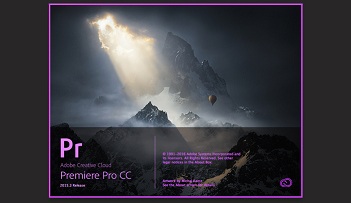
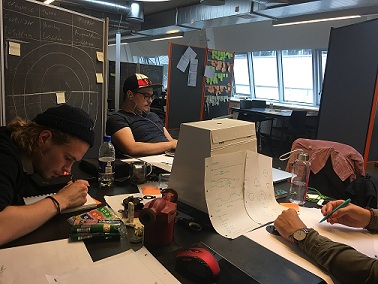
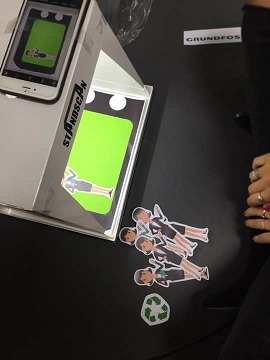
Presenting our video sketches “Day 4”
Thursday September 21nd
We were in the group working towards a deadline 12:55 where we should present several concept videos. They were mostly done but needed finish and sound. The feedback we got was primarily that the message of the concept should be more clear. Since our group presented first the feedback was not really great and quite limited. Nobody knew how to approach the video feedback session and kept mostly quiet. It was only when the last group had presented their videos the audience knew what to point out and what was important
Putting the ends together “5 Day”
Friday September 22nd
before ShowTime. So this has been quite a busy day. We have been given different tasks because the time is short. Everyone working on putting the final video together. We have been filming the last scenes for the final video and putting the different scenes together.

